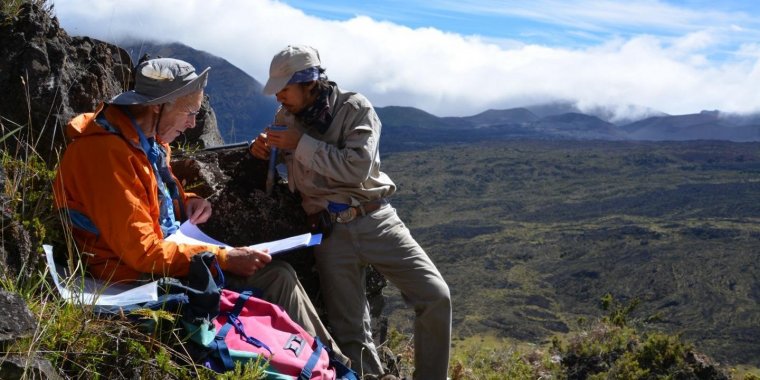| News / Science News |
Earth's last magnetic field reversal took far longer than once thought
Earth's magnetic field seems steady and true -- reliable enough to navigate by. Yet, largely hidden from daily life, the field drifts, waxes and wanes.

Researchers orient cores from a Hawaii lava flow site that recorded a magnetic polarity reversal. Photo: Brad Singer
The magnetic North Pole is currently shifting toward Siberia, forcing the Global Positioning System that underlies modern navigation to update its software sooner than expected.
Every several hundred thousand years, the magnetic field dramatically shifts and reverses its polarity. Magnetic north flips to the geographic South Pole and, eventually, back again. This reversal has happened countless times over Earth's history, but scientists' understanding of why and how the field reverses is limited.
New work by University of Wisconsin-Madison geologists Brad Singer, Brian Jicha and colleagues finds that the most recent field reversal 770,000 years ago took at least 22,000 years to complete, several times longer than previously thought. The results call into question controversial findings that some reversals could occur within a human lifetime.
The new analysis -- based on advances in measurement capabilities and a global survey of lava flows, ocean sediments and Antarctic ice cores -- provides a detailed look at a turbulent time for Earth's magnetic field. Over millennia, the field weakened, partially shifted, stabilized again, then finally reversed to the orientation we know today.
The results provide a clearer picture of magnetic reversals at a time when, as the field weakens and moves, some scientists believe we may be experiencing the early stages of a reversal. Other researchers dispute the notion of a present-day reversal, which would likely affect our heavily electronic world in unusual ways.
A reversing field might significantly affect navigation and satellite and other communications. The current study suggests that society would have generations to adapt to a lengthy period of magnetic instability. (National Science Foundation)
YOU MAY ALSO LIKE





